In every household, a ladder is an essential tool for those hard-to-reach corners or eager DIY projects. Its usefulness, however, is often met with a common predicament- storage.
Where does one keep such a bulky item? Tucked away in a crowded garage, or can you store ladders outside?
This article aims to shed light on this topic.
We will discuss in depth whether or not storing ladders outside is a viable option, the pros and cons of outdoor storage, and how to adapt your storage practices to ensure the longevity of your ladder.
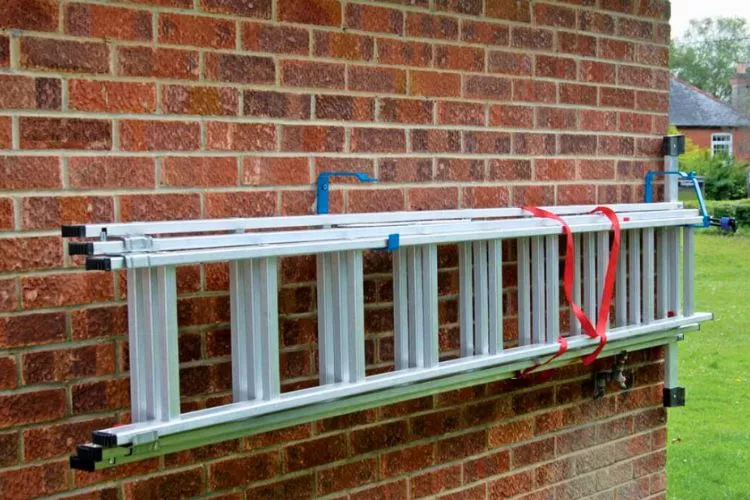
Join us as we delve into details that would guide homeowners and ladder users in preserving their vital tool while optimizing their storage space.
Can You Store Ladders Outside?
Yes, you can store ladders outside, but it is not generally recommended. The outdoor environment, with its fluctuations in humidity and temperature, can affect the material of your ladder, whether it’s aluminum, fiberglass, or wood.
Exposure to moisture can cause metal ladders to rust, wooden ladders to warp, and fiberglass ladders to deteriorate.
Other factors such as ultraviolet radiation from sunlight can also damage the ladder’s longevity.
Therefore, if you must store your ladder outdoors, ensure it’s well-covered and off the ground, preferably in a dry, shaded area. However, for optimal longevity and safety, indoor storage in a dry, temperature-controlled environment is always the best practice to follow.
How do you store a long ladder outside?
While the ideal storage location for a ladder is indoors, certain circumstances might necessitate outdoor storage. Here’s how you can safely store a long ladder outside:
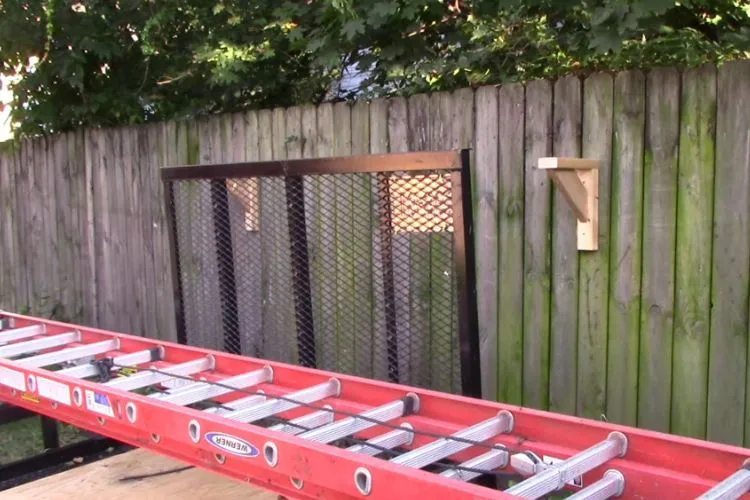
- Choose a Suitable Location: Select an appropriate location for the ladder that’s out of the elements as much as possible. An area with overhead cover can offer some degree of protection against rain and direct sunlight.
- Use a Sturdy Rack or Hooks: You should store your ladder off the ground, preferably on sturdy wall-mounted brackets or hooks. This reduces the risk of the ladder being damaged by ground moisture or rot (if wooden), and it also deters theft.
- Consider a Ladder Storage Cover: Investing in a weather-resistant cover can significantly extend the life of your ladder by shielding it from harsh weather, UV radiation, and wildlife. Make sure to properly secure the cover to protect against wind.
- Correct Positioning: Position the ladder so that it extracts the least amount of natural elements. If it’s a non-articulated ladder, try storing it horizontally. If you must store it vertically, place the foot of the ladder on the ground and its top against the wall as this minimizes stress on the rungs.
- Regular Maintenance: Regularly clean and inspect your ladder. Remove any leaf, dirt, or grime that may collect over time. Routine examination for rust, cracks, or other damage is vital for maintaining your ladder’s functionality and safety.
Remember, outdoor storage can be risky due to environmental factors and can potentially reduce the lifespan and safety of your ladder. Always consult the manufacturer’s recommendations and guidelines regarding storage and maintenance of your specific ladder.
How do you protect a ladder from the sun?
Exposure to direct sunlight can be harmful to a ladder, especially if it’s made of materials like fiberglass that can degrade under UV radiation. Here’s how you can protect your ladder from the sun:
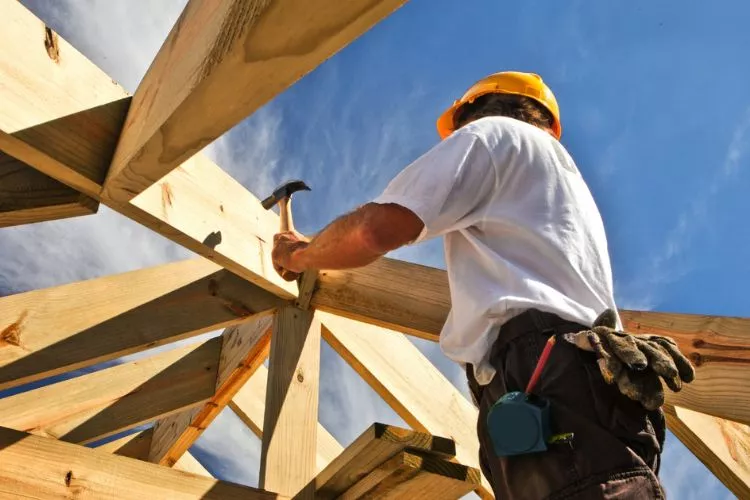
- Use a UV-Resistant Cover: Invest in a cover made specifically for ladders that is UV-resistant. Cutting down on sun exposure can drastically reduce wear on the ladder. Ensure the cover fits snugly and is secured tightly to avoid being blown off by wind.
- Store in a Shady Spot: If you must store your ladder outdoors, select a location that typically stays in the shade for most of the day. This will minimize direct exposure to sunlight.
- Apply a UV-Protectant: Some sprays can help guard against UV damage, particularly for ladders made of plastic or fiberglass. Before applying any product, confirm that it is safe and suitable for the ladder’s material by reading the manufacturer’s instructions.
- Regular Care and Maintenance: Regular cleaning is necessary even if the ladder is covered. Debris, if left unattended, can scratch or damage the ladder, making it more susceptible to UV damage.
- Indoor Storage: This is the best way to shield your ladder from the sun. Whenever possible, store the ladder indoors, out of direct and indirect sunlight.
Remember, many factors contribute to ladder deterioration. Being mindful of how and where your ladder is stored can significantly influence its lifespan and safety. Always refer to the ladder manufacturer’s instructions for specific care and maintenance guidance.
Where is the best place to store a ladder?
Storing a ladder safely and correctly can significantly extend its lifespan and maintain its safety. The best place to store a ladder is typically indoors, in a dry, well-ventilated, and temperature-controlled area.
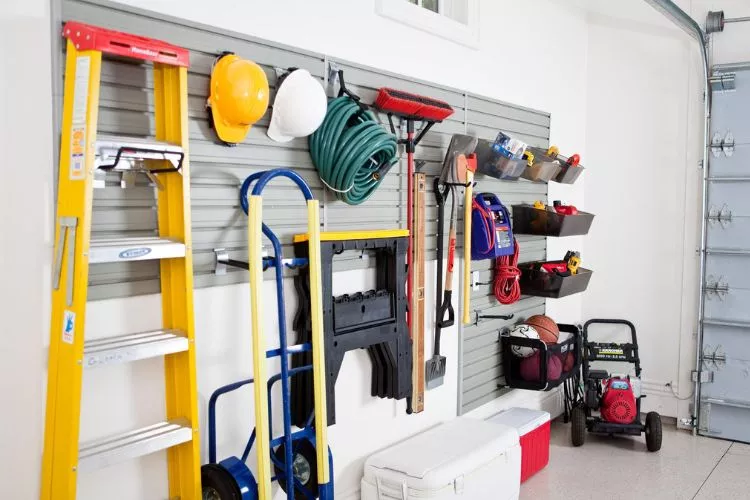
- Garage: A garage is the most common location for ladder storage. Try to find a spot along a wall where it doesn’t obstruct your walking path and won’t be bumped by your car. Mounting it horizontally along a wall by using storage hooks can ensure stability and safety.
- Tool Shed or Workshop: A tool shed or workshop can be a perfect place to store your ladder. It should be stored off the ground, not leaning against any unstable structure, and ideally, in a position where it does not cause obstruction.
- Basement/Attic: If space permits, a basement or an attic can also serve as a great storage space. Always ensure that the ladder is stored flat so it doesn’t warp.
No matter where you choose to store your ladder, make sure the area is dry and free from extreme temperature fluctuations. Moisture and severe temperatures can damage differing ladder materials, leading to rust, rot, or general degradation.
Lastly, ensure your ladder is clean and dry before storing. Leaving any chemicals or unnatural substances on the ladder could potentially cause damage to its material. And always inspect the ladder before using it, especially if it’s been in storage for an extended period.
The optimal location for storing a ladder is a dry, climate-controlled area like a garage, workshop, or basement/attic, where it can be stored safely without causing obstruction or being subjected to potential harm.
What is the proper ladder storage per OSHA?
The Occupational Safety and Health Administration (OSHA), a division of the U.S. Department of Labor, sets certain standards for the proper storage of ladders to ensure safety and longevity. Here’s a summary of those guidelines:
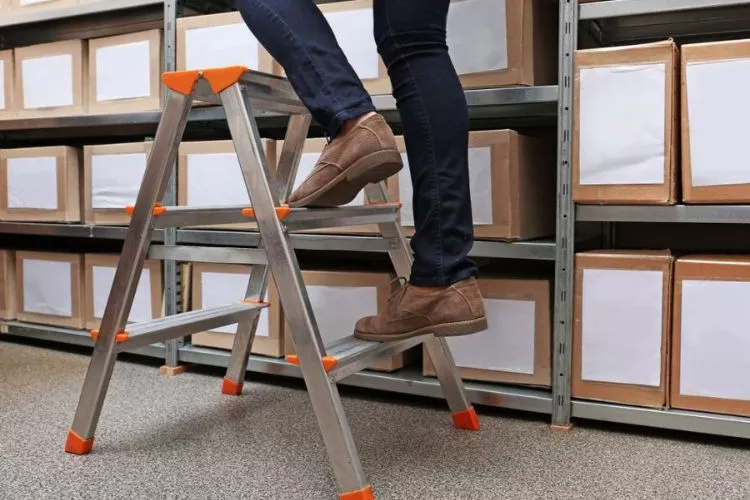
- Away from Harm: Ladders should be stored in locations that are safe from harmful environmental conditions. Both portable and fixed ladders should be placed where they are not exposed to corrosion or could be affected by workplace activity.
- Secure Positioning: Ladders should be stored in a way that does not present a tripping hazard. Portable ladders should ideally be stored horizontally on racks with an adequate number of support points to prevent sagging1.
- Stored Separately: OSHA suggests storing ladders separately from other tools or materials that might damage them. They should not be kept in areas where they may be exposed to damage from workplace activities or traffic1.
- Maintain Condition: Regular inspections are necessary to ensure ladders remain in a safe condition for use. If a ladder becomes damaged, it must be immediately marked and taken out of service1.
- Proper Training: Employees should be trained to understand the correct way to handle and store ladders. They should be aware of the risks associated with improper ladder use and storage1.
By adhering to these OSHA guidelines, not only can ladder safety be improved, but the lifespan of the ladder can also be extended significantly.
Frequently Asked Questions (FAQs)
Can Aluminium Ladders Be Stored Outside?
Yes, aluminium ladders can be stored outside. However, it’s not ideal. Storing them outdoors can expose them to harsh weather conditions. Despite aluminium being rust-resistant, the rungs, hinges, and rivets often contain other metals that can rust. Regular exposure to humidity and moisture can deteriorate the ladder, compromising safety and its lifespan.
How Do You Store a Ladder Without a Garage?
There are few options to store a ladder without a garage. Inside your home, you can utilize areas like a basement or an attic. Ensure it’s safe and obstructs no paths. If outdoor storage is the only option, place the ladder off the ground in a shady location and use a weather-resistant cover to shield it from the elements. Regular maintenance and checks are also crucial.
Do Ladders Rust in the Rain?
Yes, ladders, particularly those made of metal, can rust if left in the rain. While aluminium ladders are rust-resistant, other metal components can rust. If exposed to rain and not dried in a timely manner, even a small amount of rust can compromise the stability and safety of the ladder.
Can Fiberglass Ladders Be Stored Outside?
Fiberglass ladders can be stored outside, but it’s not advised. Fiberglass is prone to deterioration when exposed to sun and harsh weather over time. UV radiation can cause the fiberglass to fade and brittle, affecting both its functionality and safety. If outdoor storage is necessary, it should be stored off the ground, in a shady area, and covered with a protective weather-resistant cover.


